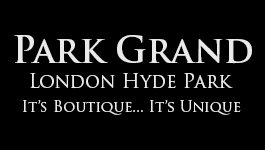As the capital city of the UK, it’s unsurprising that you’ll find many political hubs within the city. With a broad variety of legendary buildings and monuments, the city has a long history of political intrigue and legendary figures. Whatever your side, London’s vast business, tourist and entertainment hub makes it the perfect city in which to engage in the political landscape as a citizen as well as a tourist. With this in mind, London not only commemorates the history of English rule but crafts it out of the experiences of those living and visiting the city.
However long your stay at the tourist and corporate hotels in London, take some time out of your day to explore the vast and exciting political landscape, which in recent years has become even more robust and potent. Below are just some of the amazing attractions, museums and city spots where you can get a taste of politics in the UK.
Big Ben
Big Ben is one of the best-known monuments on the River Thames and acts as a signpost for the Houses of Parliament behind it. Whilst not necessarily a political rallying point in and of itself, the 96-metre tower that was opened in 1859 still captures the imagination to this day, even if it is being renovated until 2021.
Houses of Parliament
The home of English politics since 1834, the Palace of Westminster that stood before it dates back to the year 1016. After it was destroyed by fire it was reopened as the Houses of Parliament, also incorporating the House for Commons where members of parliament meet, debate and form new laws for the country.
Guests at hotels near Paddington Station and any London visitor can book tours of the Houses of Parliament during summer recess periods. These run at 90 minutes, whilst separate tours to the House of Lords will give you access to public galleries where you can watch the Lords in action.
10 Downing Street
The symbolic and literal home of the Prime Minister of the UK, number 10 Downing Street is one of the best-known houses in the country. Built in 1682 by George Downing, the street has become synonymous with press conferences, often undertaken outside the terraced house where you might get a glimpse of the brown and white tabby cat - Larry - who acts as parliaments chief mouser.
Whilst tours are prohibited, visitors can get a glimpse of the street and house from behind the gilded gates of Whitehall.
Pubs of Whitehall
For those looking to catch a glimpse of MP’s in the wild, then the pubs around Westminster are your best bet. As some of the best bars near Hyde Park, spots like the Marquis of Granby and the Red Lion will, in the periods where Parliament is in session, get you up close and personal with some of the most influential figures in British politics.
Scotland Yard
The heart of London policing, getting into Scotland Yard might be hard without a search warrant or indeed, a conviction, but it’s headquarters beside the House of Parliament are a testament to its influence and power. With its distinct spinning emblem standing outside, Scotland Yard acts as the headquarters for the police chiefs and investigation units in the city.
Guildhall
The legendary Guildhall has long held a history of civic authority throughout the centuries. Dating back to 1440, this Moorgate based site potentially has an even longer history, with records showing civic activity on the site throughout the Roman and Saxon era. The Guildhall still retains a symbolic function as the headquarters for the City of London Corporation, whilst also serving as an administrative building for city affairs and a private events space. Furthermore, an art gallery has been built alongside it, which holds the official City of London art collection.
Buckingham Palace
Whilst the Royal Family of England don’t have government authority over the country, they still have a symbolic and philanthropic presence and still have a lot of influence. After all, their history does date back thousands of years, and with the preservation of the monarchy, there’s also a respect for the country and indeed the city’s history. Buckingham Palace is probably the best marker of this, with it acting as the official residence of Queen Elizabeth II. Tours are available between July and October, whilst glimpses of the Palace guards, and sometimes even members of the Royal Family can be seen from outside its gates.
Churchill War Rooms
The Churchill war Rooms are located underneath King Charles Street and offer a unique insight into the underground British command centre and the life of its leader, Winston Churchill. With tours of the labyrinthine tunnels alongside exhibits exploring the life of Churchill, this Imperial War Museum branch is one of the best places in the country to gain insight into the inner workings of the government during the Second World War.
William Morris House
Whilst this house in Walthamstow is better known for its exploration of contemporary art and Morris’s famous interior designs and textiles, it also covers the other interesting aspects of William Morris’s life. This Victorian-era socialist was known for his philanthropic works and left-wing philosophies, many of which are explored in the exhibitions of this Grade II listed Georgian house, which served as the arts craft’s influencer during his teenage years.
Highgate Cemetery
Highgate Cemetery is one of the best known of the Magnificent Seven cemeteries of London, and probably holds the most revered tombs of them all. With the graves of Karl Marx, John Singleton Copley, Yusuf Dadoo and Paul Foot all located in this beautiful wooded cemetery, there are plenty of other political activists, writers and thinkers buried throughout its lush forested lanes.
Speakers Corner
Located in Hyde Park, Speakers Corner is based in the North East of the park and represents a spot where historically, people can speak and debate to the public on any topic of their choosing, this meant that many socialists and activists took to the pew throughout the 19th and 20th century, attracting the likes of George Orwell and Karl Marx.
Cable Street
Based near Fleet Street in the Whitechapel area of the East End, this is the legendary spot at which anti-fascist protesters ran out Oswald Moseley’s racist British Union of Fascists and clashed with the police. Here you’ll find a mural plaque on St George Town Square commemorating the event, a testament to the city’s resistance to authoritarianism to this very day.
Share the post "Political Sightseeing in London"





















